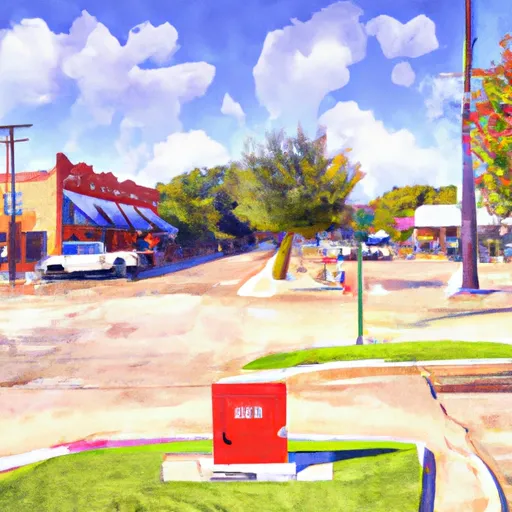°F
°F
mph
Windspeed
%
Humidity











Millsap, Texas is a small rural community located in Parker County. The town enjoys a humid subtropical climate, characterized by hot summers and mild winters. Summers are typically hot and humid, with temperatures often reaching the mid-90s Fahrenheit, while winters are relatively mild with average temperatures in the 40s and 50s.
Hydrologically, Millsap is situated near the Brazos River, which provides a source of water for the town and the surrounding area. The river also offers opportunities for recreational activities such as fishing, boating, and kayaking.
Outdoor enthusiasts can take advantage of the numerous recreational opportunities in Millsap and its surrounding areas. The nearby Possum Kingdom Lake is a popular destination for boating, fishing, and swimming. Hiking and nature trails can be found in the nearby Mineral Wells State Park, where visitors can enjoy picturesque landscapes and wildlife spotting. The Dinosaur Valley State Park is another attraction that offers hiking trails and the opportunity to view preserved dinosaur tracks.
Overall, Millsap, Texas provides a pleasant climate, access to water resources, and ample outdoor recreation opportunities for residents and visitors alike.
Weather Forecast
Millsap receives approximately 828mm of rain per year, with humidity levels near 78% and air temperatures averaging around 19°C. Millsap has a plant hardyness factor of 8, meaning plants and agriculture in this region tend to thrive here all year round.
Regional Streamflow Levels
4
Cubic Feet Per Second
3
Cubic Feet Per Second
9
Cubic Feet Per Second
0
Cubic Feet Per Second
Nearby Camping
| Camping Area | Reservations | Toilets | Showers |
|---|---|---|---|
| Selma City Park - Lake Amon Carter | |||
| Dinosaur Valley State Park | |||
| Hico City Park | |||
| Lake Mineral Wells State Park | |||
| Stephenville City Park | |||
| Wise County Park |



